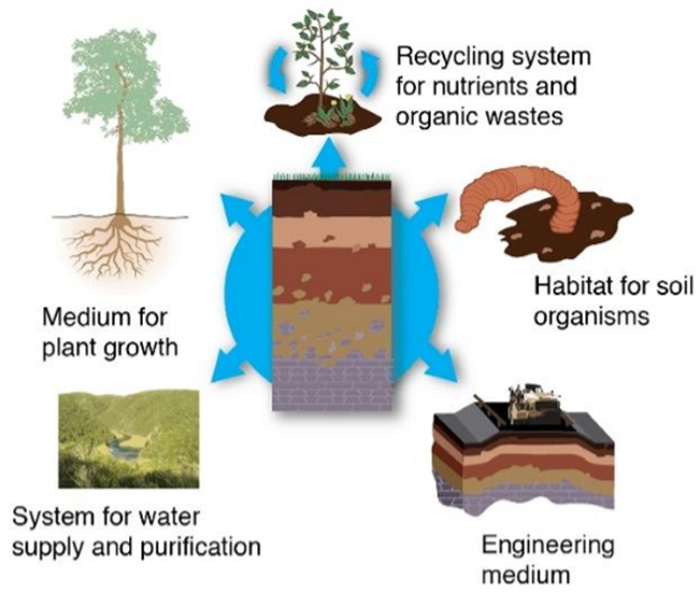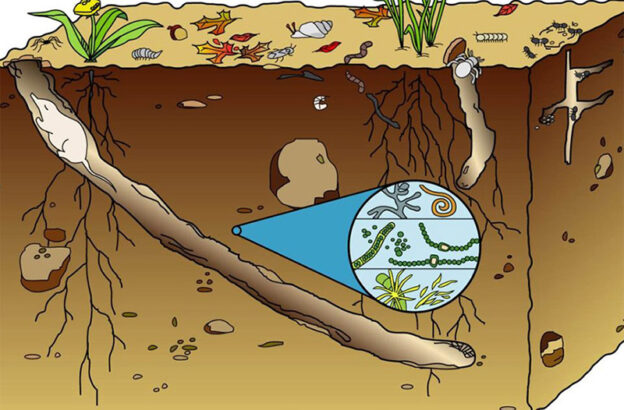Soil – Part 5
SOIL PROFILE
This is the vertical arrangement of soil layers also known as soil horizons. It consists of three main layers that is top soil, subsoil and bed rock.
These horizons can also be called horizon A, horizon B and horizon C
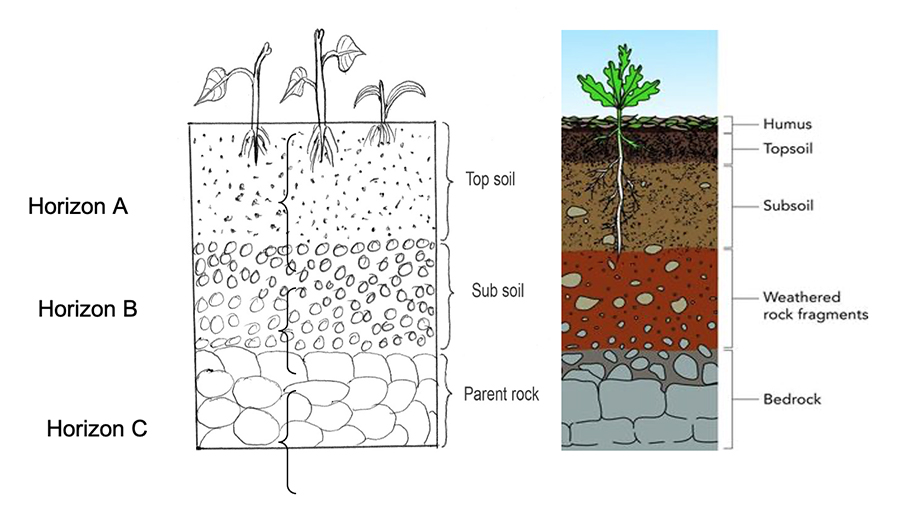
HORIZON A: TOP SOIL
This is the topmost layer of a soil profile. It contains a lot of humus which makes it look darker in colour compared to the deeper zones. It is more fertile and better aerated with a lot of micro – organisms. It is the most important for plant life because it is where most of the nutrients are located. It has most of the plant roots.
HORIZON B: SUB SOIL
This is a zone immediately below top soil, where finely divided material such as organic matter, clay, iron and aluminium accumulate. It is rich in minerals compared to the parent rock. The soil is compacted and not well aerated. It is brown due to oxidized iron compounds. It contains fewer roots, mainly those of trees and shrubs. It has less organisms and less humus compared to the topsoil
HORIZON C: PARENT ROCK
This is the zone below subsoil. It can also be called the basement rock or parent material. It consists of the main rock from which soil originates. It is therefore the parent soil material which has not yet been weakened to form soil. It does not contain humus, it is lighter in colour due to lack of salts. It is poorly aerated and does not contain roots or big living organisms, but contains some microorganisms such as bacteria and fungi.
Importance of Soil
- Soil provides anchorage and hence allows the growth of plants.
- It supplies water and nutrients that are required in the growth of plants and other soil organisms
- The soil is the main part of agriculture. Different types of soils support different kinds of crops. Without agriculture, food, shelter and clothing are not possible.
- Many microorganisms live in the soil.
- Soil is a water reservoir. Therefore, Underground water when obtained, is used for various purposes.
- Soil is important in the recycling nutrients and organic material.
- Human beings can use soil for different functions for example
- As an engineering medium. That is to say, a place where they keep and the factory plants
- Purifying water by passing it through soil
- Using soil to carry out construction of buildings and roads
Questions
- True or False: The layers of soil go in this order: Topsoil, bedrock, subsoil.
- Soil is made of:
A. pieces of rock
B. air and water
C. matter that was once alive
D. all of the above - On this diagram, show label the deepest horizon of soil. Label it as horizon C
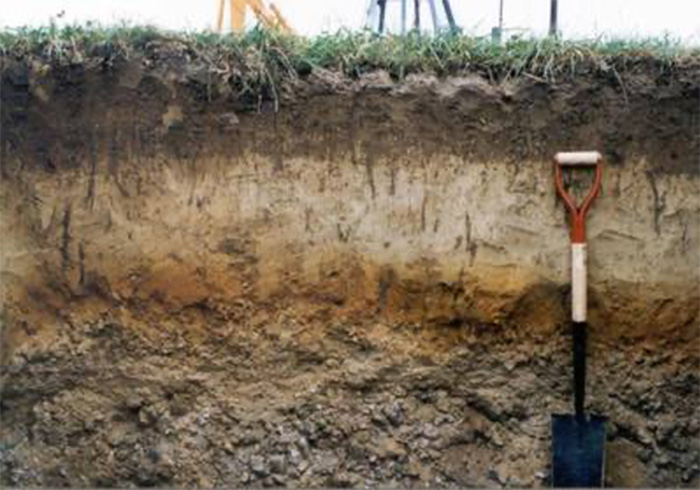
4. What is humus made from?
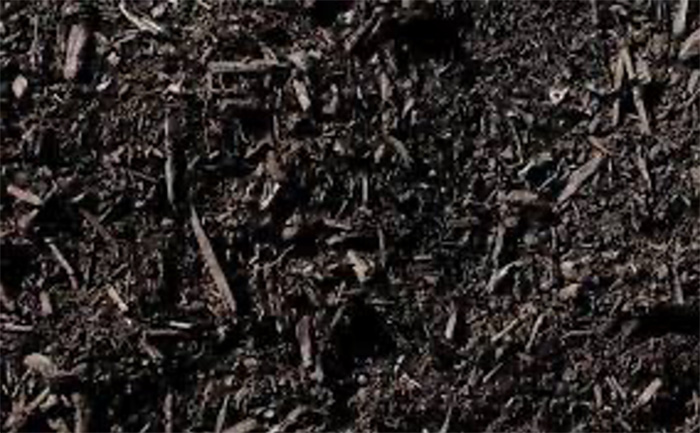
A. The remains of decayed plants.
B. The remains of decayed animals
C. .Both
- Which layer of soil contains lots of roots and minerals for growing plants?
A. Top soil
B. Sub soil
C. Bedrock - What is a a soil horizon?
A. A factor influencing how soil is formed
B. A layer of soil
C. An organism found within the soil
D. A technique used to map soils - Which three layers form the soil profile?
A. Air. water and soil
B. Minerals, organic matter and living organisms
C. Clay, silt and sand
D. The topsoil, subsoil and parent material - Why is organic matter (humus) an important part of soil?
A. It helps to improve water infiltration
B. It can break down organic pollutants
C. It converts nitrogen in the air into nitrates used by plants
D. It is rich in nutrients, which is important for fertility - Which of the following creatures will you NOT find in the soil?
A. Earthworm
B. Springtail
C. Mite
D. Lemur - On the diagram below, add more arrows and write your own other uses of soil apart from those that have been mentioned.
